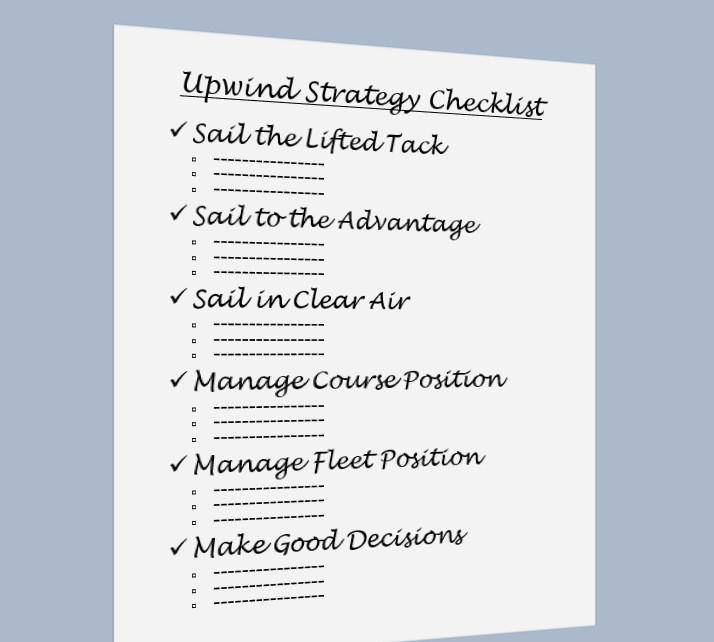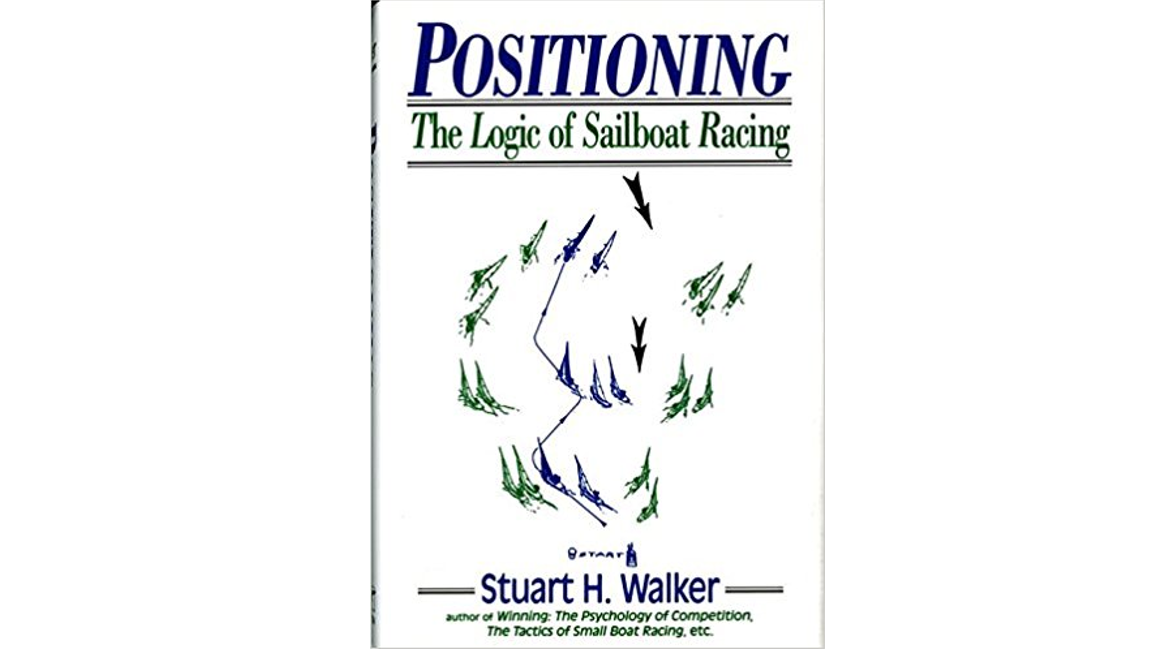I struggle with upwind strategy skills more than any other element of sailing. Smart upwind sailing requires managing the trade-offs between sailing the lifted tack, sailing in more wind, picking a side, and sailing conservatively.
For this post, we decided to put all the upwind strategy skills in one place. This might give you a big picture reference to evaluate and improve your upwind sailing.
We gathered these skills from all the major sources, including the following:
- Positioning: The Logic of Sailboat Racing, Stuart Walker
- Winning in One Designs, Dave Perry
- Championship Tactics, Gary Jobson and Tom Whidden
- Performance Racing Tactics, North U.
- Numerous on-line videos and articles
- Previous SailZing posts on Upwind Strategy
Sail the Lifted Tack
- Be able to recognize the lifted tack to within 5 degrees, regardless of position on course; use compass if necessary
- Keep track of changing wind patterns throughout the race:
- average wind direction
- approximate frequency of shifts
- In oscillating winds, stay on lifted tack and tack only when headed below the average
- Sail the lifted side of expanding puffs
Sail to the Advantage
- Recognize when one side or portion of the course will be advantaged:
- Light air
- Dying breeze
- New wind
- Persistent or single shift
- Geographic shift
- Medium or shorter length courses on lakes
- Near shore on lakes
- Crowded course
- Sail toward advantage until it is reached
- Sail headed tack if necessary
- Use small lifts and headers to work your way to the advantage
- Pinch or foot as needed
- Be patient until the advantage is reached
Sail in Clear Air
- Recognize the bad air zones around a boat or group of boats
- blanket zone
- backwind zone
- starting line (bow behind neighboring boats)
- packs of boats
- unsustainable lane
- approaching boat on opposite tack
- windward and leeward marks
- Use best option to clear your air
- tack away
- foot off
- sail in high mode
- Recognize when it is preferable to keep going in bad air
- going the right way
- stronger winds
- temporary condition
Manage Course Position
- Know position of mark and laylines
- Avoid the laylines early
- To seek an advantage while remaining conservative, move to a side early in the beat and then use smaller shifts to move back toward center later in the beat
Manage Fleet Position
- Stay with the top sailors and the majority of the fleet
- Recognize when you are ahead/behind and losing/gaining
- Avoid being furthest to one side unless certain of advantage
- Don’t let boats on opposite tacks cross unless:
- heading to an advantage
- on the lifted tack
- Cross other boats when advantage gained; don’t be greedy
- Position conservatively
- Inside and to windward of other boats when sailing away from the rhumb line
- Inside and to leeward of other boats when sailing toward the rhumb line
- Between the next mark and the boats behind to maintain a lead
Make Good Decisions
- Think ahead and anticipate upcoming situations
- Be flexible and ready to adapt by combining strategy elements
- Recognize priorities
- light/medium air or unstable air: seek more wind
- more stable: shifting slowly and less variation in velocity: seek the lifted tack
- heavy air: seek speed and control
- big fleet: seek clear air, manage fleet position
- Use all clues
- Boats ahead and behind
- Wind on water
- Flags
- Smoke
- Clouds
- Weather forecast
- Use sound decision-making principles
- Maintain the big picture; don’t let temporary tactical situations override your strategy
- When relatively certain, have patience and courage
- When relatively uncertain, make high percentage decisions
- Make high risk decisions only when large gain needed that is not possible with fundamentals





